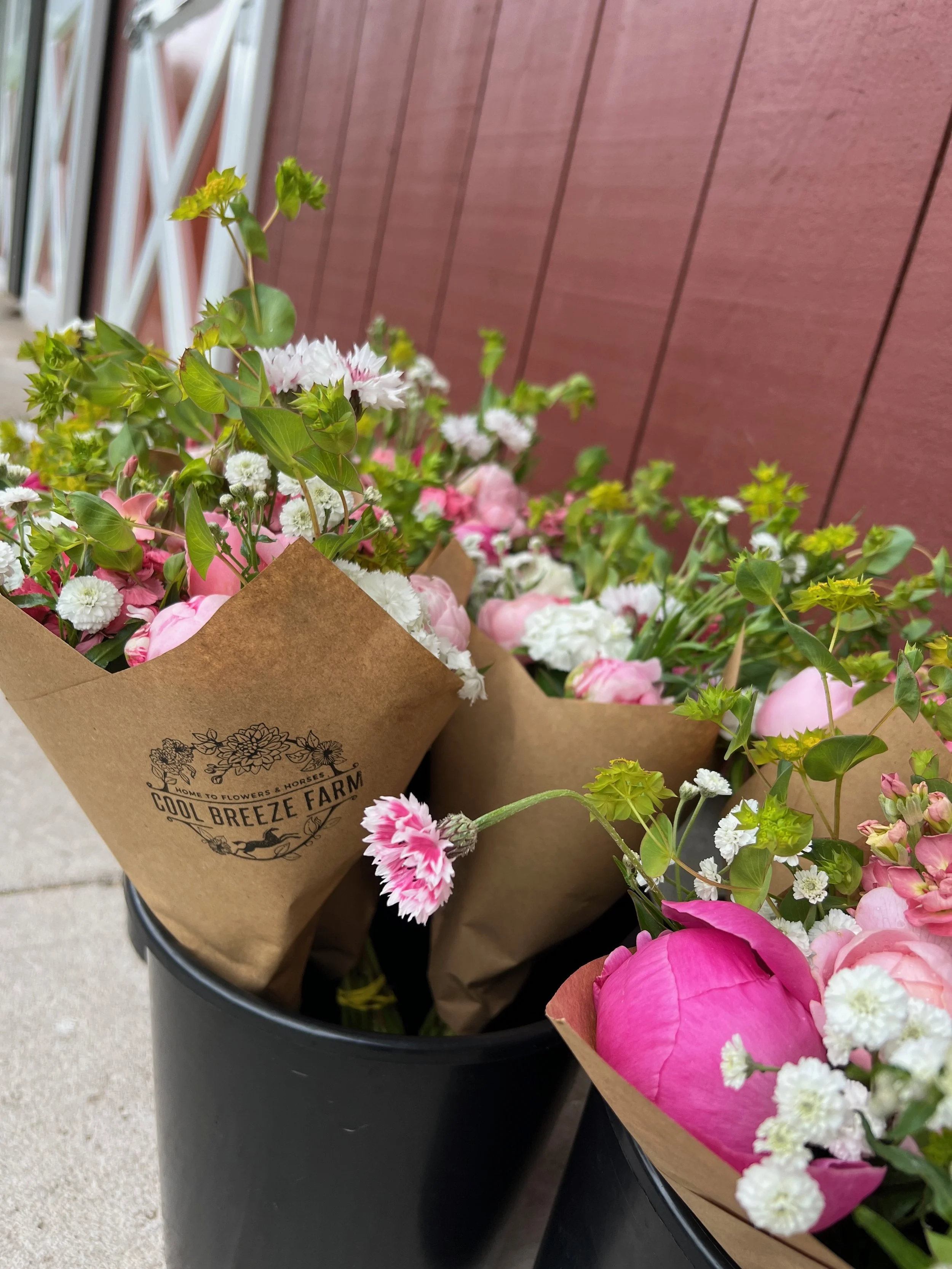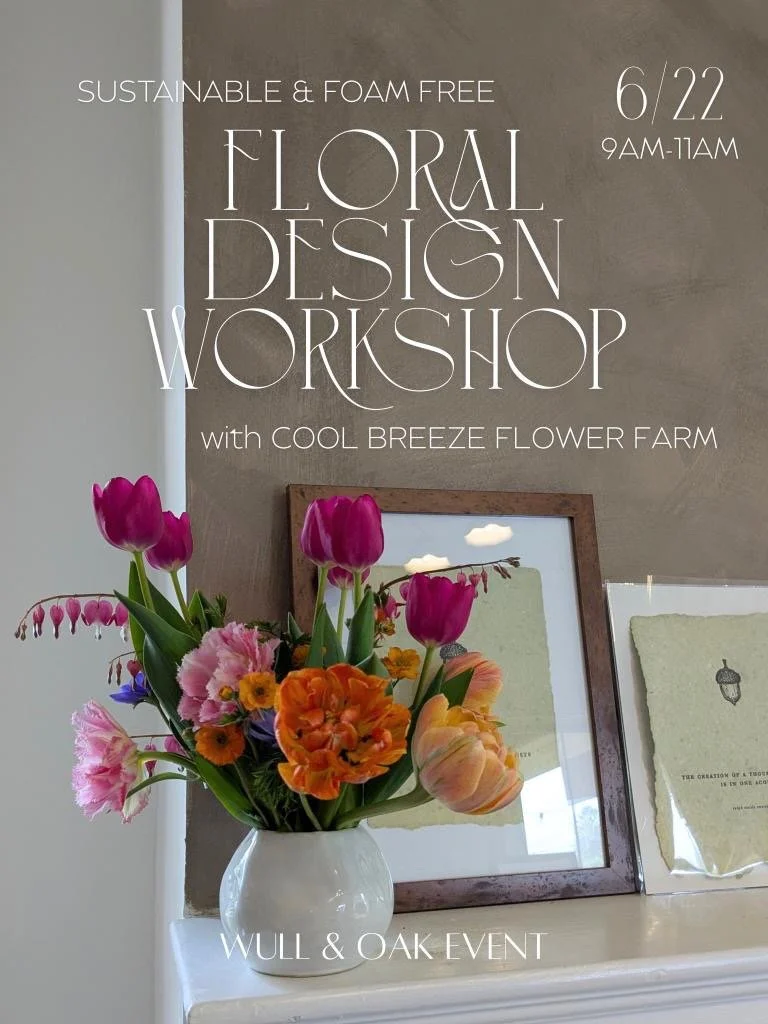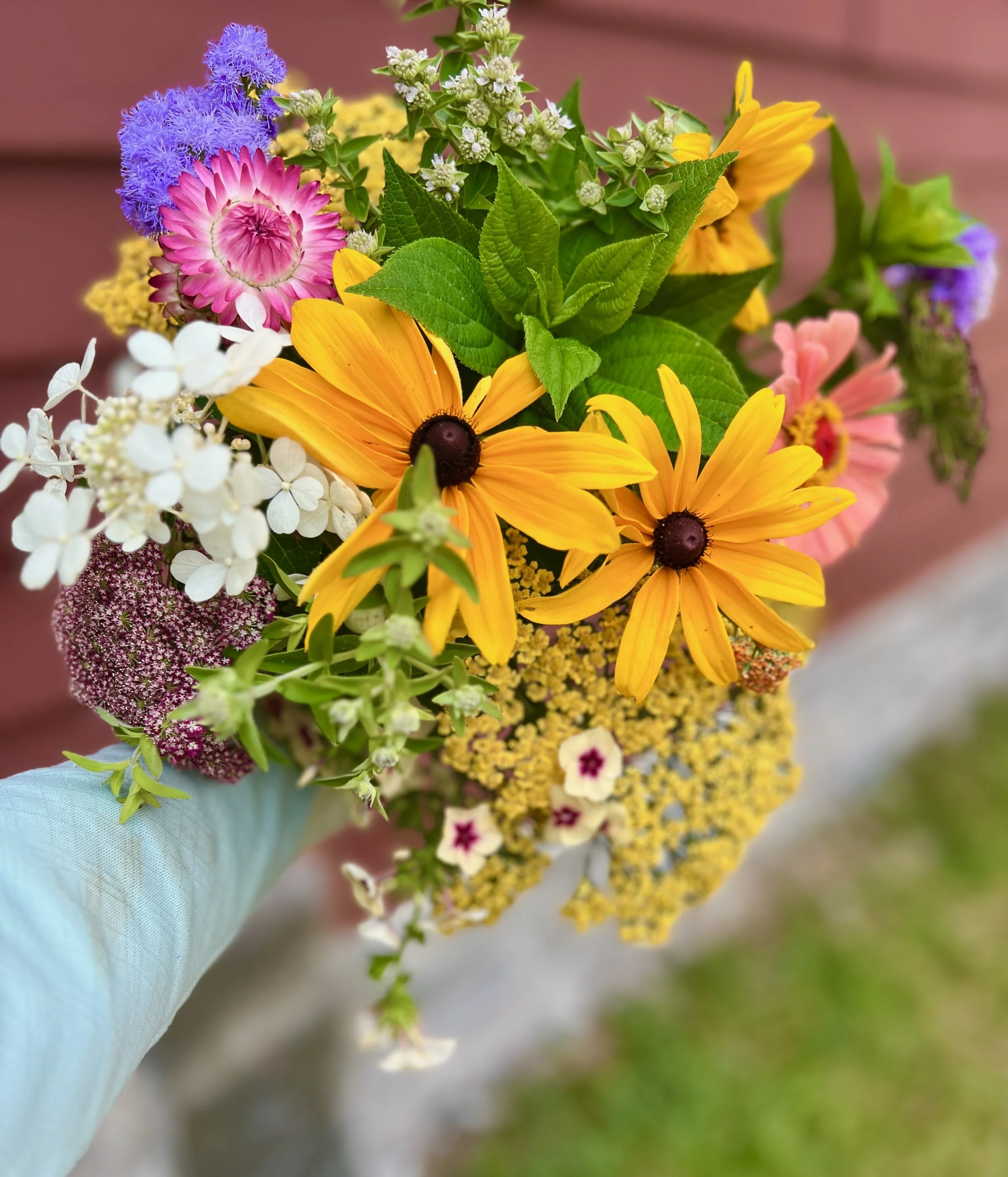Local Flowers: What Does That Mean?
The flower field in early May.
When I stumbled into flower farming, I didn’t know a lot about buying or selling flowers. In fact, my whole experience was about enjoying them outside. It wasn’t until I had extra flowers, ones that were unsold or unsaleable, inside the house, that I realized the joyous uplift I could get from bringing cut flowers inside.
Once you decide cut flowers are a part of your life, there are important choices to be made. Most importantly, in my mind, is where do you get them? No one is going to die without cut flowers (although now I would argue that life is greatly diminished without them) but still, there is no arguing, they are not a necessity. Because they are a luxury, I think it is even more important to think about making sustainable choices when buying flowers.
Roughly 80% of flowers in the U.S. are imported. That means they are flown here, often from South America, creating a large carbon footprint and doing lasting damage in the countries where they are grown. Due to some quirks of US trade policy, there aren’t a lot of restrictions on what chemicals can be used on these imported flowers, so for many reasons, including the health of the planet and that of overseas farmworkers, buying any old flower isn’t great for the planet.
Monarch on scabiosa
Once you decide you want to buy local, you have to figure out how to determine, “how local is this flower?” It is not always easy, but here are a couple helpful guidelines:
Ask. Ask the person where you buy flowers where they were sourced. More and more florists and designers are getting local flowers and customers demanding local will speed that process.
Consider seasonality. If it doesn’t seem like a kind of flower that would be growing in your area during that time of year, it might not be local. It’s not a hard and fast rule. Some growers have hoop houses that allow them to get flowers earlier or later than an unprotected field would allow, but some flowers just don’t grow well here in New Jersey. A quick example is waxflower, a common grocery store staple. If it is in the bouquet, it was probably not grown in New Jersey, maybe the US, but probably not New Jersey.
What is the price? If it is too cheap to seem possible, it’s likely not local. There is a lot of labor in growing flowers without chemicals, and the price reflects it. Long, tall roses at $1 a stem are not locally grown.
Buying local flowers means embracing seasonality. The flower you want isn’t always available when you want it. No one feels this disappointment more than a flower farmer on Mother’s Day. On the other hand, embracing seasonality is also what makes local flowers so special. A flower available only for a couple weeks out of the year reminds us what is absolutely unique at every moment in time. Nothing conjures the memory of a given season like the sight and scent of a certain flower.
The best way to buy genuinely local flowers is to find a local flower farmer, or one, or two and support their work. Many of us are growing without chemicals. We are growing flowers for customers, but are also mindful of growing native plants and shrubs, specifically for birds and bugs, and to create a balanced ecosystem that keeps pests at bay. Another thing to consider when choosing a grower is that even organic pesticides impact pollinators. Neem oil, while considered organic, still kills the pollinators that come into contact with it. No chemical is even more sustainable than organic.
If you are unsure how to find a local flower farmer in your area the Association of Specialty Cut Flower Growers has a great resource: Local Flowers that you can use to find a grower close to you.
Many of you reading this have already made local flowers a part of your life. Thank you for that.
For my local readers, I have two announcements.
Design Workshop
I will be conducting a sustainable design workshop at Wull & Oak on Sunday, June 22nd from 9 - 11 am. You can sign up on the Wull & Oak website by clicking here: Sustainable Floral Design Workshop
More Flowers
As summer annuals begin to bloom, I have more flowers available, and more bouquets on most weekends. If you need a bouquet, just reach out. You can pick up here or at Wull & Oak. Designer quality blooms of the most unique seasonal flowers, grown with absolutely no chemicals and wrapped in Kraft paper are $28.
July bouquet





